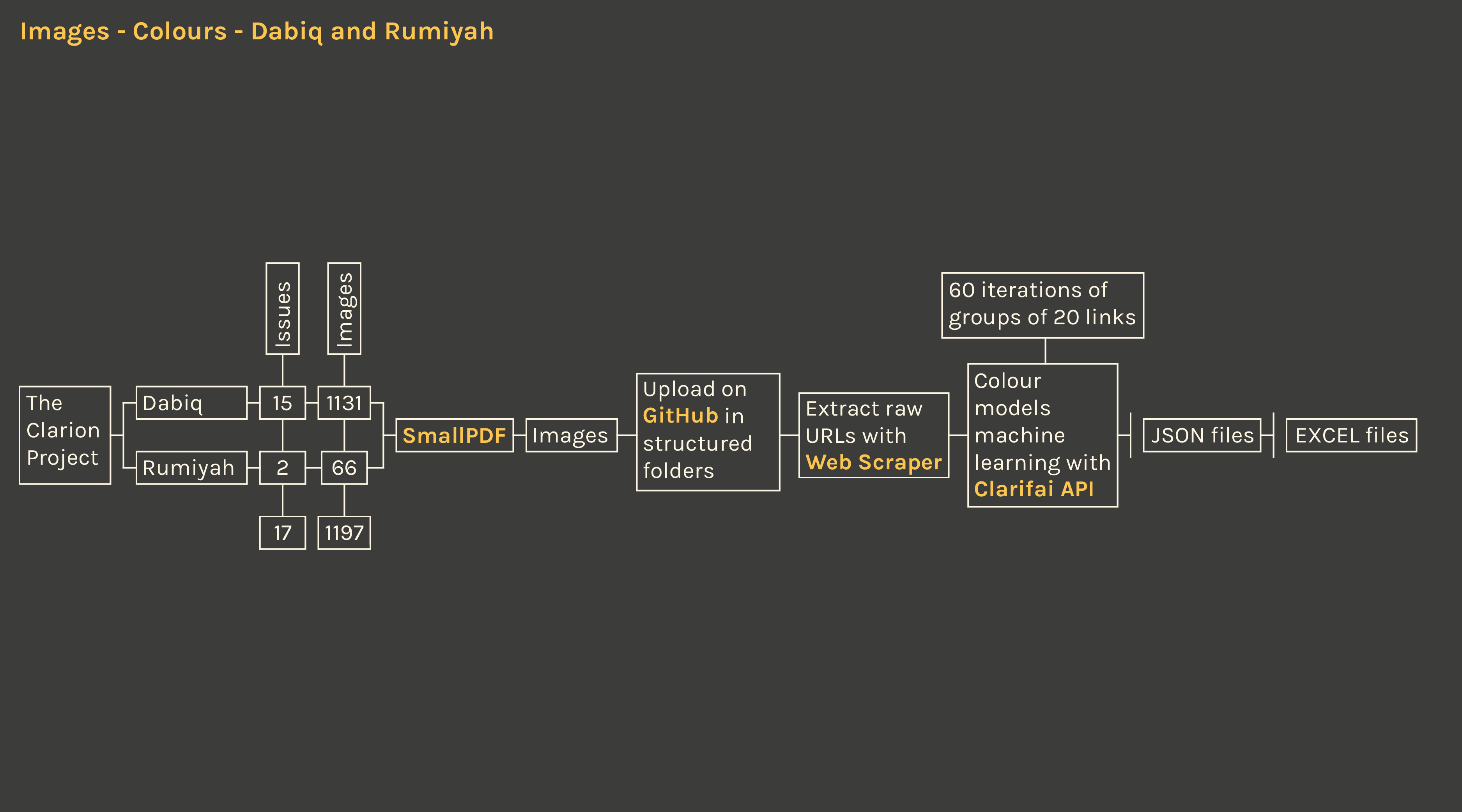Description
The visualization describes the predominant color models in the official magazine by the Islamic state: Dabiq and Rumiyah. The color analysis performed on every image has the aim to investigate the presence of a coordinated image behind the communication strategy behind the Islamic state.
Each row identifies an entire magazine edition. The colors are the ones that the Clarifai APIs evaluate as representative for every image analyzed. The colors are sorted by HEX values.
It is possible to have an overview of the color models in their normalized form for an easy visual comparison between the predominant colors for each edition of the magazine. Alternatively, the user can view the same color models weighted on their density (percentage of presence in the image from where the color model was extracted) as this is an effective reading that makes it possible to understand which is the actual chromatic predominance found in every edition of the magazines that the Clarifai APIs reveals from each image.


